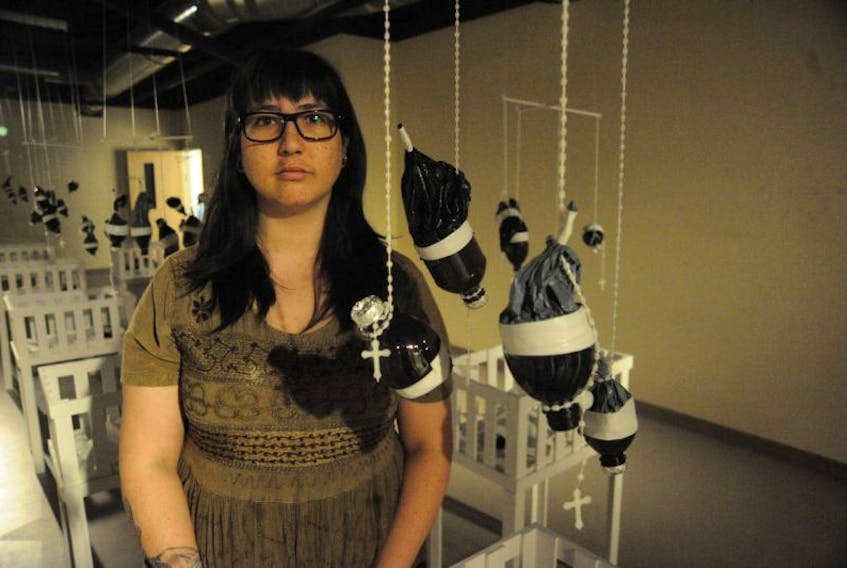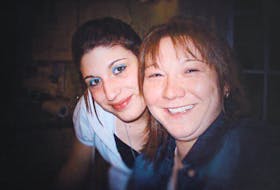It’s a gut-wrenching feeling the 29-year-old wants the observer to experience while viewing “1876 changed my life,” an exhibit that draws attention to the plight of indigenous cultures since Canada became a country 150 years ago.
Tremblett, who now lives in Corner Brook, has spent her life living between the Innu community of Sheshatshiu in Labrador and the island of Newfoundland.
The dimly lit exhibit features 10 white cribs arranged in the Tina Dolter Gallery at the Rotary Arts Centre in Corner Brook. The cribs give a sense of it being an orphanage or maybe some residential institutionalized setting.
In each crib lies a tea doll, a prominent feature of Tremblett’s heritage.
In Innu culture, tea dolls were traditionally stuffed with tea and given to children to play with, but also so they could help carry some of the load as the nomadic people moved about the land.
Though not obvious, each of Tremblett’s tea dolls are inescapably stuffed with copies of the Indian Act, federal legislation passed when Canada was formed in 1876 and which continues to be a sore point for First Nation people today.
Above each crib hangs a mobile. Hanging from the mobiles are black “lungs,” which are makeshift drug paraphernalia Tremblett said were a common sight growing up in Sheshatshiu. Each lung is illuminated by a set of glow-in-the-dark rosary beads dangling from them, which Tremblett said represents the role Christianity played in oppressive attempts to assimilate indigenous people.
Tremblett said it’s no coincidence some of the tea dolls are covered up by their blankets.
“You don’t know if that’s just how the child is sleeping, or you might get an uneasy feeling the child may be dead,” she said, leaving it to the observer to ponder. “I think the gut reaction is powerful and causes you to think about what’s going on here.”
She said the lungs and rosary beads are metaphors for the early exposure to elements not natural to indigenous culture and the influence they could have.
Tremblett, who studied fine arts at Grenfell Campus after completing a degree in behavioral neuroscience at Memorial University, hopes her work will help people understand how history continues to impact indigenous cultures in Canada.
“Intergenerational trauma is still happening and affecting people today,” she said. “Even though the Indian Act is an old piece of legislation, it still governs indigenous people today and they way they live. It is still impacting children and communities.”
[email protected]
Twitter: WS_GaryKean









